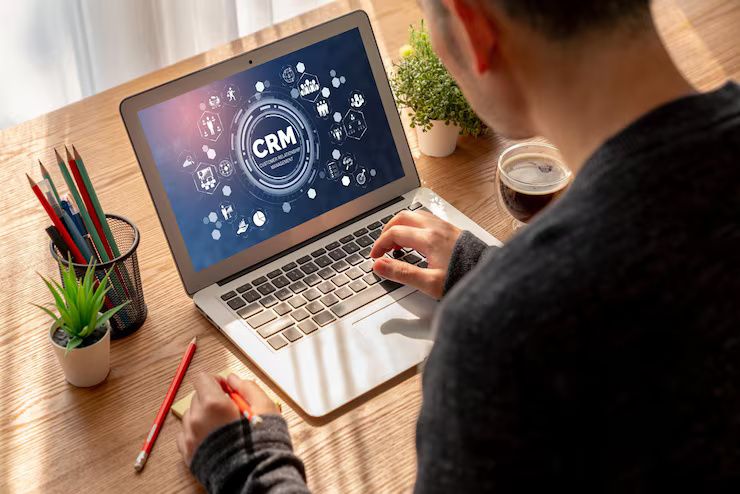Enterprise CRM Software Overview: Explore Features, Insights and Practical Tips
Enterprise CRM software has become a core technology for large organizations that manage complex customer relationships, large sales teams, and multi-channel communication. At its simplest, a Customer Relationship Management platform helps companies organize customer information, track interactions, and support collaboration across departments. It exists because organizations needed a structured way to replace scattered spreadsheets, disconnected tools, and manual tracking. As digital interaction increased, enterprises required a unified system to manage customer data securely, improve communication, and streamline operational workflows.
Enterprise CRM software focuses on managing high-volume data, advanced reporting, and cross-departmental coordination. Unlike basic CRM tools that are built for small teams, enterprise-level systems provide features that support global operations, role-based access, workflow automation, governance controls, and integrations with analytics, communication, and marketing platforms.
This type of technology grew as organizations expanded digitally and customer expectations increased. Businesses needed better visibility into the customer journey from initial inquiry to ongoing engagement. CRM platforms became the central hub for insights, documentation, and collaborative processes.
Importance
Enterprise CRM software matters today because customer interactions have grown more complex and data-driven. Organizations rely on accurate customer information for decision-making, planning, and long-term relationships.
This topic affects:
-
Large enterprises with extensive customer databases
-
Industries handling multi-step sales cycles such as telecom, banking, manufacturing, and technology
-
Teams working across countries and time zones
-
Leadership needing performance insights and forecasting
-
Support teams managing high customer engagement volumes
It helps solve common challenges:
-
Data fragmentation: Replaces multiple disconnected tools
-
Operational delays: Provides workflow automation
-
Low visibility: Offers dashboards and analytics
-
Inconsistent communication: Enables centralized interaction history
-
Scalability limitations: Supports large datasets and global operations
High-intent search themes such as enterprise CRM platforms, CRM analytics tools, customer data management solutions, workflow automation systems, and contact management software align naturally with the purpose of this topic.
Recent Updates
The past year has seen rapid developments in enterprise CRM technology. Organizations have shifted toward systems that support automation, collaboration, and real-time decision-making. Key updates include:
-
AI and predictive insights (2024–2025): Major CRM platforms introduced more built-in forecasting, customer insights, and automated recommendations.
-
Data privacy and governance enhancements (2024): Many providers added stronger access controls and audit tracking to align with global regulations.
-
Integration growth (2024–2025): There has been increased adoption of unified platforms that connect CRM with analytics tools, communication apps, and internal systems.
-
Mobile and remote-work features (2024): Companies adopted CRM apps that support on-the-go access for distributed teams.
-
Customer experience analytics (late 2024): New dashboards that track journey patterns, sentiment, and touchpoint performance became common.
These changes reflect how enterprises are focusing on digital transformation, advanced data insights, and customer-centric operations.
Laws or Policies
Enterprise CRM software is influenced by data protection, privacy, and governance requirements. The exact policies vary by country, but several common regulations shape how organizations use CRM systems:
-
Data privacy laws: Many regions enforce rules on how customer information is stored, processed, and accessed. Examples include GDPR in the European Union and similar privacy-focused laws in other countries.
-
Data residency requirements: Some regions require that customer data be stored within the country or in certified data centers.
-
Security compliance standards: Enterprises often align with standards related to encryption, audit logs, and role-based access.
-
Communication compliance: CRM systems that support messaging or email tracking may need to follow national communication guidelines.
-
Industry-specific rules: Sectors like healthcare, finance, and public administration may require additional documentation and governance controls.
Enterprises must choose CRM software that supports compliance, secure access, and data handling aligned with these regulations.
Tools and Resources
A variety of tools and resources assist organizations in evaluating, managing, or enhancing CRM usage. These include:
Helpful Tools and Platforms
-
CRM analytics dashboards
-
Customer engagement tracking tools
-
Data visualization platforms
-
Workflow automation plugins
-
Form and data-capture tools
-
Customer interaction logs and ticketing software
-
API-based integration tools
Useful Templates and Resources
-
CRM implementation templates
-
Data migration checklists
-
Access control guidelines
-
Workflow mapping sheets
-
Reporting templates
-
Customer interaction documentation templates
Online Resources
-
Learning portals and documentation libraries
-
Web-based CRM comparison platforms
-
Data governance guidelines
-
CRM integration guides
Key Features of Enterprise CRM Software (Table)
| Feature Category | Description |
|---|---|
| Customer Data Management | Centralized recordkeeping, contact profiles, history tracking |
| Workflow Automation | Automated tasks, assignment rules, reminders |
| Analytics and Reporting | Dashboards, forecasting, performance insights |
| Integration Capabilities | APIs, third-party tools, system connectors |
| Collaboration Tools | Shared notes, team workspaces, file management |
| Access Controls | Role-based permissions, audit logs |
| Mobility | Mobile apps for remote teams |
| Security | Encryption, authentication, secure data storage |
Practical Tips for Using Enterprise CRM Software
-
Start with clear data organization standards.
-
Create role-based access structures to protect information.
-
Use automation to manage repetitive tasks.
-
Integrate communication tools to maintain consistent customer records.
-
Monitor dashboards to understand patterns and performance.
-
Regularly audit data quality to ensure accuracy.
-
Provide user training to improve adoption and consistency.
FAQs
What is enterprise CRM software?
It is a technology system designed to manage customer information, interactions, workflows, and collaboration for large organizations handling high data volumes.
How does enterprise CRM support decision-making?
It provides real-time dashboards, performance reports, forecasting tools, and customer insights that help teams understand patterns and plan strategies.
Which teams typically use enterprise CRM systems?
Sales, marketing, support, operations, and leadership teams rely on CRM tools to coordinate activities and maintain customer information.
Is enterprise CRM used only by customer-facing teams?
No. It is also used by analytics teams, administrative departments, and managers who require visibility into processes and data.
How does CRM software support governance and compliance?
It includes audit trails, role-based access, secure data storage, and documentation that support regulatory requirements.
Conclusion
Enterprise CRM software plays an important role in helping large organizations manage their customer relationships, operational workflows, and data insights. As customer expectations and digital interactions continue to grow, enterprises rely on CRM platforms to support visibility, collaboration, and structured communication. Recent updates show strong trends toward automation, advanced analytics, and enhanced compliance. With the right tools, governance practices, and user training, organizations can use CRM systems to improve efficiency and transparency while maintaining secure and organized customer information.






